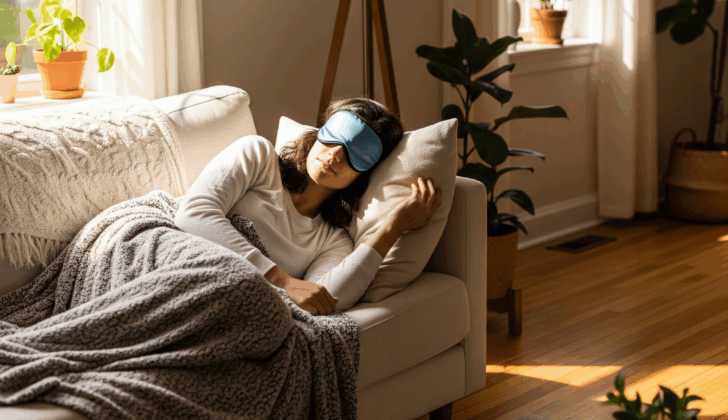The Secrets to a Successful Power Nap: How to Recharge Without Wrecking Your Sleep
Feeling groggy in the afternoon? Struggling to stay focused or productive? You might just need a power nap.
Power naps are short, focused rest periods designed to give your brain and body a quick energy boost. But not all naps are created equal! In fact, napping the wrong way can leave you feeling worse than before—or mess with your nighttime sleep.
So, what makes a power nap powerful? Let’s break it down into three key elements: timing, duration, and environment.
Why Take a Power Nap?
We all hit an energy slump now and then—especially in the early afternoon. That’s because our bodies naturally follow a rhythm called the circadian cycle, which dips around 1–3 p.m.
A well-timed power nap can:
-
Boost focus and alertness
-
Improve memory and learning
-
Lower stress
-
Improve mood
-
Support heart health
-
Help compensate for lost nighttime sleep (but not replace it!)
Ideal Nap Duration: Keep It Short and Sweet
The best power naps are 10–20 minutes long. Why? Because it gives your brain just enough time to rest without entering deep sleep.
Here’s how nap lengths affect your body:
| Nap Length | What Happens | How You Feel |
|---|---|---|
| 10–20 minutes | Light sleep only | Refreshed and alert |
| 30 minutes | Light + beginning of deep sleep | Groggy (“sleep inertia”) |
| 60 minutes | Deep sleep begins | Memory boost, but hard to wake from |
| 90 minutes | Full sleep cycle | May feel good, but risky if too late in day |
Stick to 10–20 minutes if you want quick benefits without grogginess.
When Should You Nap?
Early afternoon is best, typically between 1:00 and 3:00 p.m. This timing lines up with your body’s natural dip in alertness and won’t interfere with your nighttime sleep.
Napping later than 4:00 p.m. can make it harder to fall asleep at night, especially for light sleepers or those with insomnia.
Pro Tip: Set a timer for 25 minutes—this allows a few minutes to fall asleep and 20 minutes of actual rest.
Create the Perfect Napping Environment
To maximize your nap’s benefits, you need a sleep-friendly setting—even during the day. Try these tips:
1. Keep It Cool
A slightly cooler room helps your body relax. Aim for around 65–70°F (18–21°C).
2. Dim the Lights
Use an eye mask or blackout curtains to mimic nighttime. Darkness signals your brain to release melatonin, the sleep hormone.
3. Quiet, Please
Use earplugs or a white noise machine to block out noise. Even gentle background noise (like traffic or conversations) can reduce nap quality.
4. Lie Down If Possible
You’ll fall asleep faster and rest more deeply lying down than sitting up. A bed, couch, or even a yoga mat will work.
What Happens During a Power Nap?
In a 10–20-minute nap, your body goes through Stage 1 and Stage 2 of sleep:
-
Stage 1: Light dozing, heart rate slows, muscles relax.
-
Stage 2: Deeper relaxation, brain waves slow, memory consolidation begins.
These two stages provide a refreshing mental reset without dragging you into deep sleep, which can cause grogginess if interrupted.
Should You Drink Coffee Before a Nap?
Surprisingly, yes! This is called a coffee nap or nappuccino.
Drink a small cup of coffee, then immediately lie down for your 20-minute nap. Caffeine takes about 20 minutes to kick in, so when you wake up, you’ll feel extra alert. It’s a favorite hack among students, nurses, and productivity pros.
Power Naps vs. Long Naps: Know the Difference
| Power Nap | Long Nap |
|---|---|
| 10–20 minutes | 60–90 minutes |
| Light sleep only | Includes deep sleep |
| Boosts energy | Improves memory |
| No grogginess | Possible sleep inertia |
| Won’t disrupt night sleep | May interfere with bedtime |
Power naps are best for a quick reset. Save longer naps for when you’re catching up on sleep (but do so earlier in the day).
When Napping Might Not Be a Good Idea
While naps are generally beneficial, avoid them if:
-
You have insomnia or poor nighttime sleep
-
You find it hard to fall asleep at night
-
You’re napping longer than 30 minutes and waking up groggy
In these cases, improving your nighttime sleep habits may be more helpful than napping.
Final Tips for Better Naps
-
Set a timer: Prevent oversleeping by setting an alarm.
-
Don’t feel guilty: Naps aren’t lazy—they’re smart self-care.
-
Be consistent: If you nap regularly, try to keep the same schedule.
-
Try meditation if you can’t sleep: Even just lying quietly with closed eyes offers benefits.
Summary: The Power Nap Formula
To nap like a pro:
-
Nap length: 10–20 minutes
-
Best time: 1–3 p.m.
-
Ideal environment: Cool, dark, quiet
-
Avoid: Napping too late in the day or too long
Done right, power naps are like a mini brain reboot. They help you feel alert, energized, and ready to tackle the rest of your day.
Explore more:












